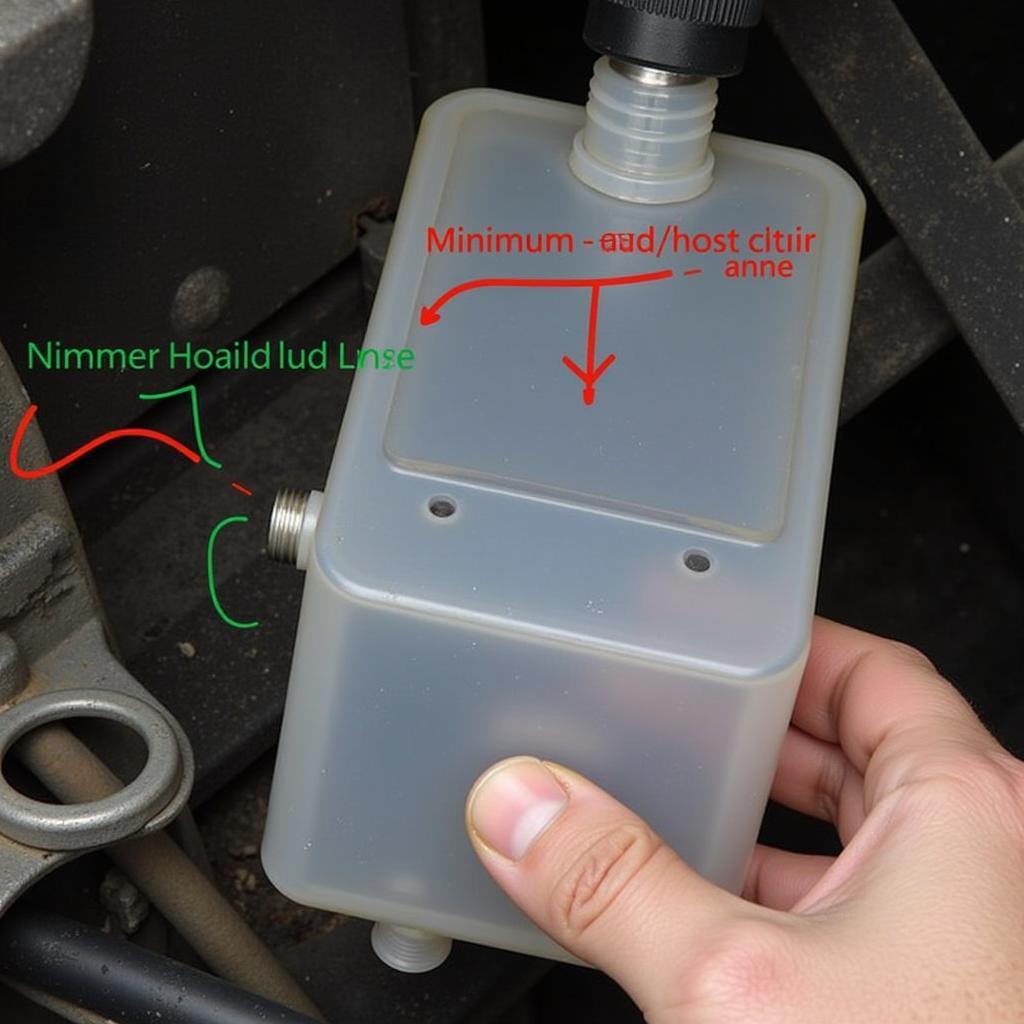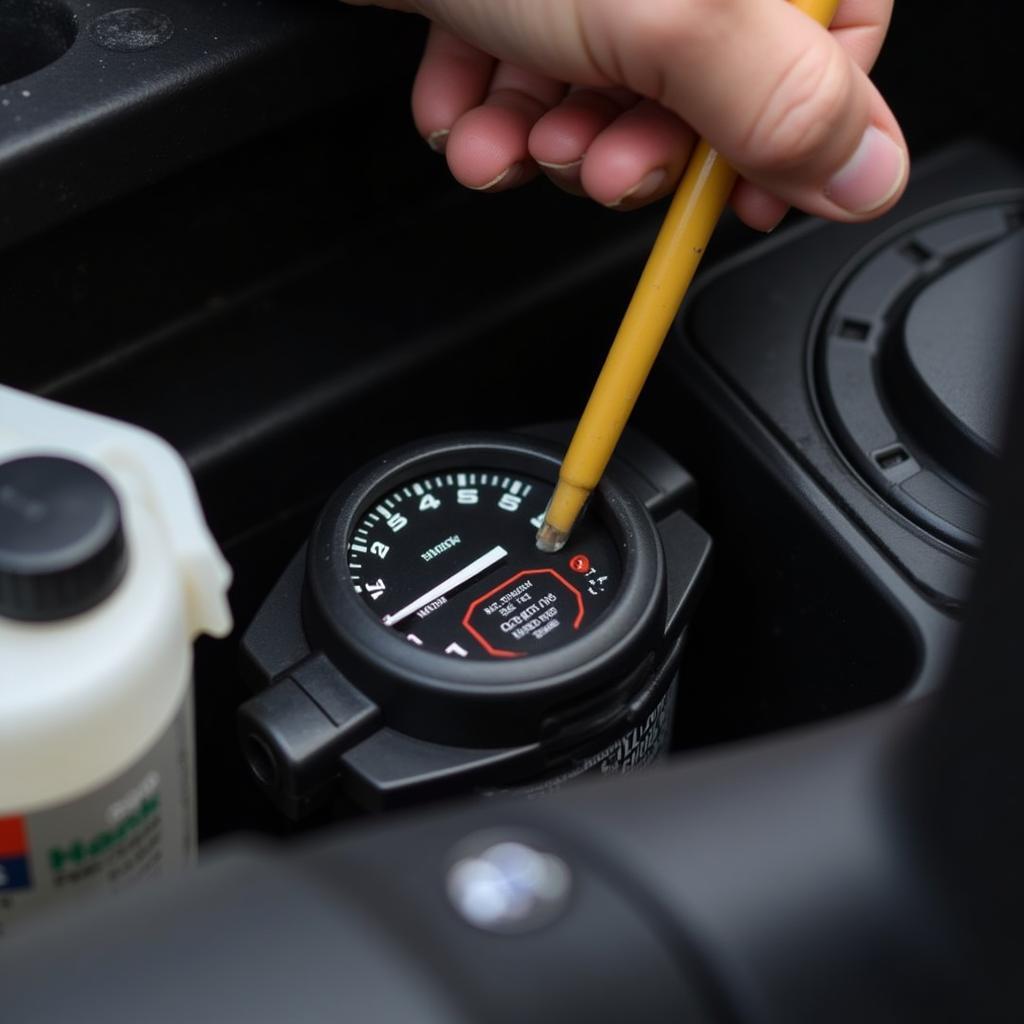A dim brake warning light on your dashboard can be confusing and concerning. It’s not a full-blown warning, but it’s also not nothing. This article delves into the common reasons behind a dimly lit brake warning light and offers practical troubleshooting advice, helping you understand what could be wrong and how to address it. Just after the introduction you’ll find a helpful link covering this topic, see: brake warning light dimly lit.
What Causes a Dim Brake Warning Light?
Several issues can cause your brake warning light to illuminate dimly. Understanding these potential problems is the first step toward a solution.
-
Low Brake Fluid: This is the most common culprit. When your brake fluid level drops, it can trigger the warning light, but sometimes only dimly, especially initially. Check your brake fluid reservoir and top it off if necessary. However, a persistent leak requires professional attention.
-
Faulty Brake Light Switch: This switch activates your brake lights when you press the pedal. A malfunctioning switch can sometimes cause a dim warning light. Testing the switch with a multimeter can help confirm if this is the issue.
-
Grounding Problems: A loose or corroded ground wire in the brake light circuit can create abnormal voltage drops, resulting in a dimly lit warning light. Check the ground connections for your brake lights and clean or tighten them as needed.
-
Wiring Issues: Damaged or corroded wires in the brake light circuit can also cause a dim warning light. Inspect the wiring harness for any visible signs of damage and replace any faulty wires.
-
Bulb Problems: Although less common, a faulty brake light bulb can sometimes cause issues with the warning light circuit, leading to a dim illumination. Check all your brake lights and replace any burnt-out or malfunctioning bulbs.
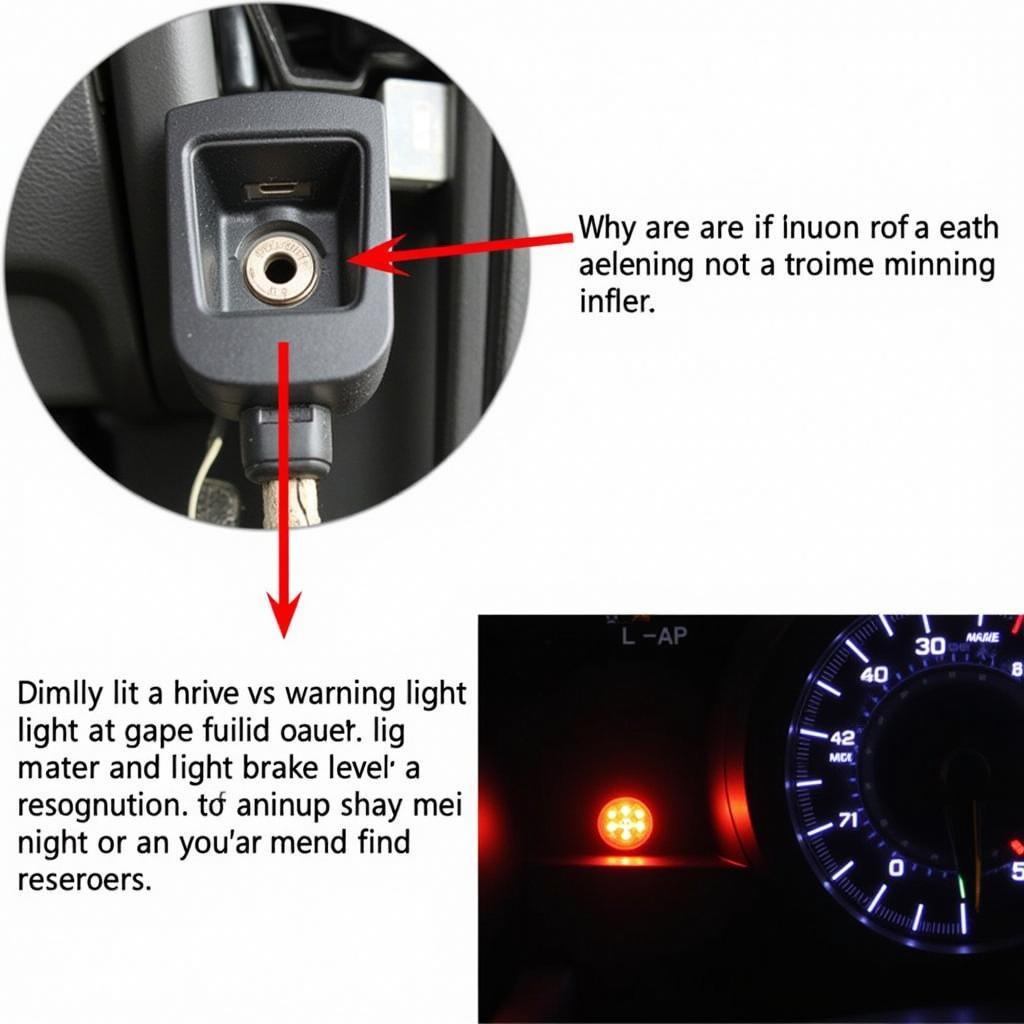 Dim Brake Light Due to Low Brake Fluid
Dim Brake Light Due to Low Brake Fluid
Troubleshooting a Dim Brake Warning Light
If you’re experiencing a dimly lit brake warning light, follow these steps to diagnose and resolve the problem.
-
Check the Brake Fluid Level: Open the hood and locate the brake fluid reservoir. Ensure the fluid level is between the minimum and maximum marks. If it’s low, add the correct type of brake fluid recommended by your vehicle’s manufacturer.
-
Inspect the Brake Light Switch: Locate the brake light switch, usually above the brake pedal. Test its functionality by depressing the pedal and observing the brake lights. If the lights don’t illuminate or are dim, the switch might be faulty. See more on brake warning light issues: brake warning light 2002 accord.
-
Check Ground Connections: Inspect the ground connections for the brake lights and the brake light switch. Clean any corrosion and ensure they are securely fastened.
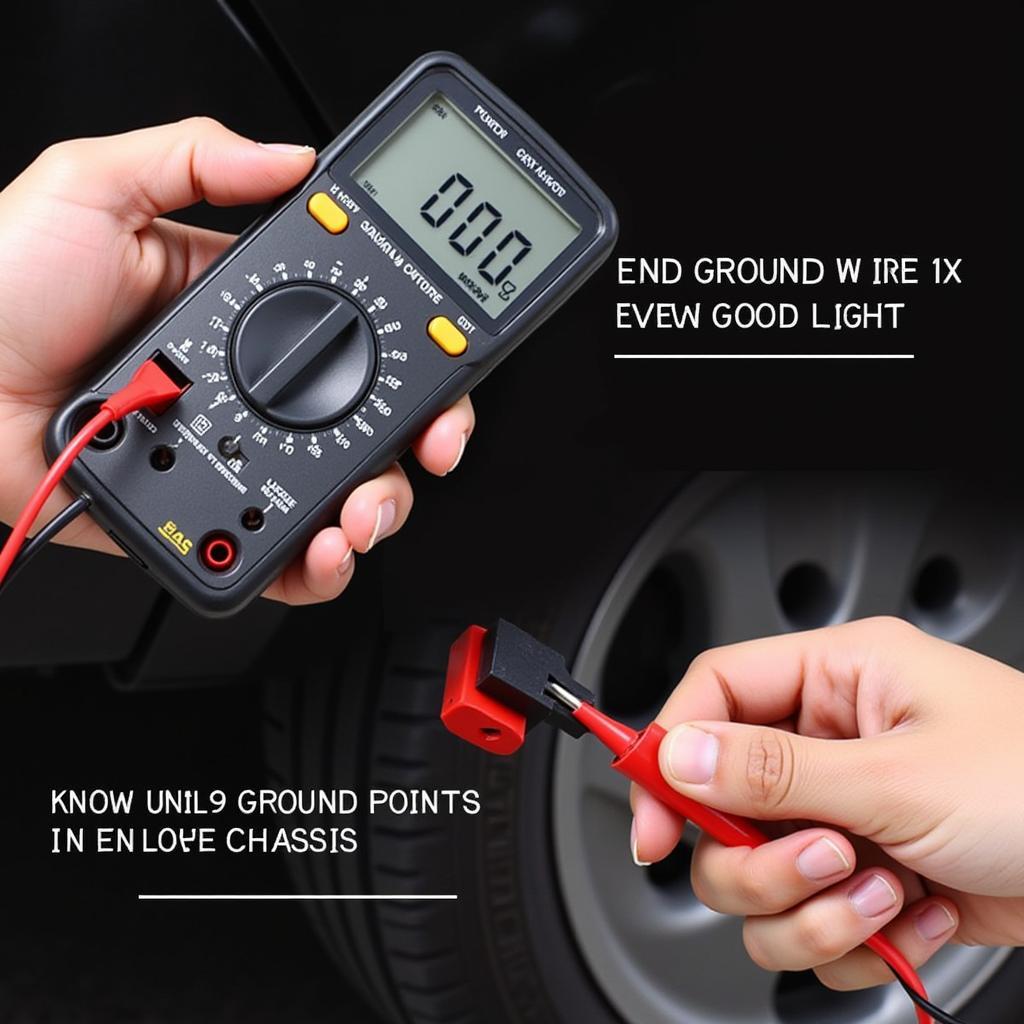 Mechanic Checking Brake Light Ground Connection
Mechanic Checking Brake Light Ground Connection
-
Inspect Wiring: Carefully examine the wiring harness for any signs of damage, fraying, or corrosion. Replace any faulty wires. You can learn more about ground short issues here: brake warning lamp ground short.
-
Check Brake Light Bulbs: Test all your brake lights, including the high-mount stop lamp. Replace any burnt-out bulbs.
When to Seek Professional Help
If you’ve tried these troubleshooting steps and the dim brake warning light persists, it’s essential to seek professional help. A qualified automotive technician with diagnostic and programming expertise can identify and resolve more complex issues, such as problems with the ABS system or other electronic components. “A dim warning light might seem insignificant,” says automotive expert, John Smith, ASE Certified Master Technician, “but it’s often an early indicator of a potentially serious problem. Ignoring it could lead to more costly repairs down the road.”
Can I Drive with a Dim Brake Warning Light?
While driving short distances with a dimly lit brake warning light might be possible, it’s generally not recommended. The light indicates a potential problem with your braking system, which could compromise your safety. It’s crucial to diagnose and address the issue promptly. Learn more about warnings vs. tickets for brake lights here: warning vs fix it ticket for brake light. Sometimes you just need a little brake humor: black humor warning brakes.
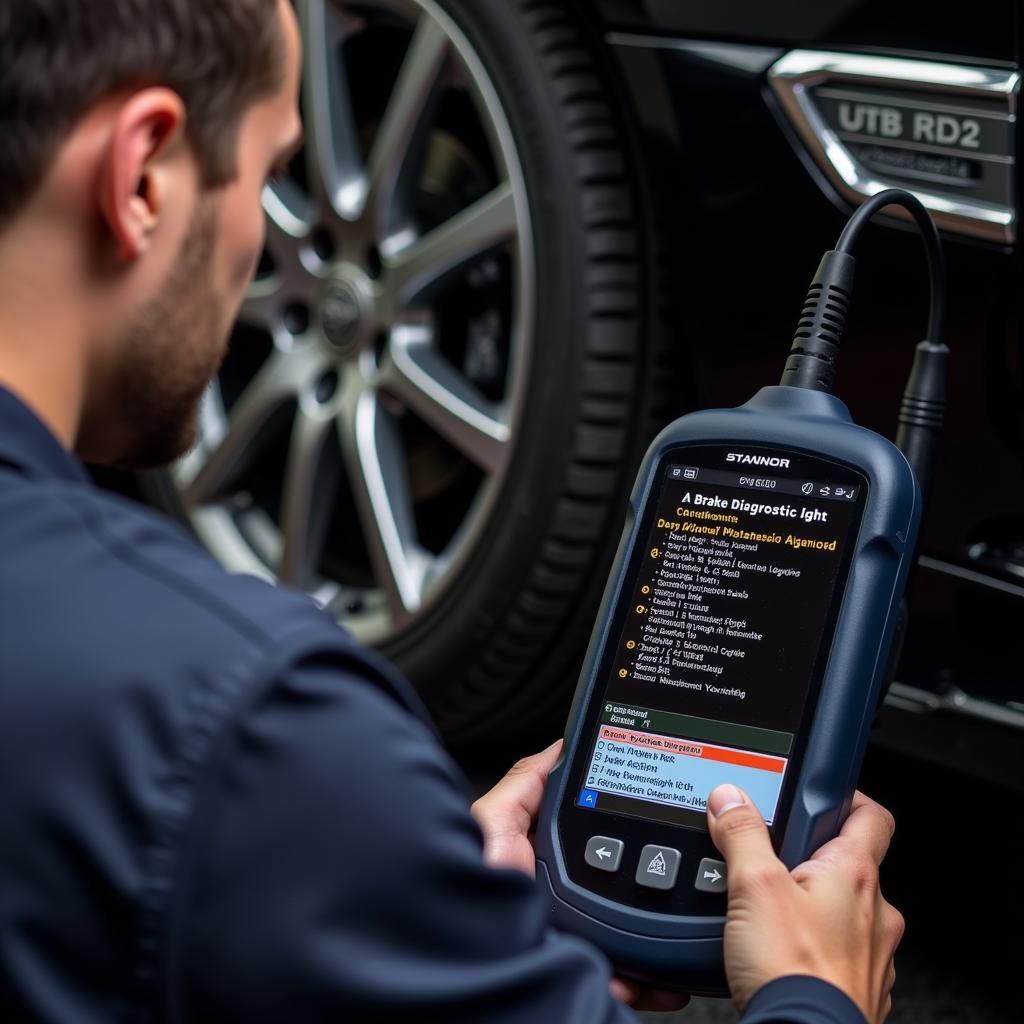 Mechanic Diagnosing Brake System with Scanner
Mechanic Diagnosing Brake System with Scanner
Conclusion
A dim lit brake warning light shouldn’t be ignored. By understanding the potential causes and following the troubleshooting steps outlined above, you can address the issue and ensure your vehicle’s braking system is functioning safely and effectively. “Regular brake system maintenance,” adds Maria Garcia, Automotive Electrical Systems Engineer, “is crucial for preventing issues like this and ensuring optimal braking performance. Don’t wait for a warning light to tell you something’s wrong.” Addressing a dim lit brake warning light promptly ensures your safety and prevents more significant problems down the road.

